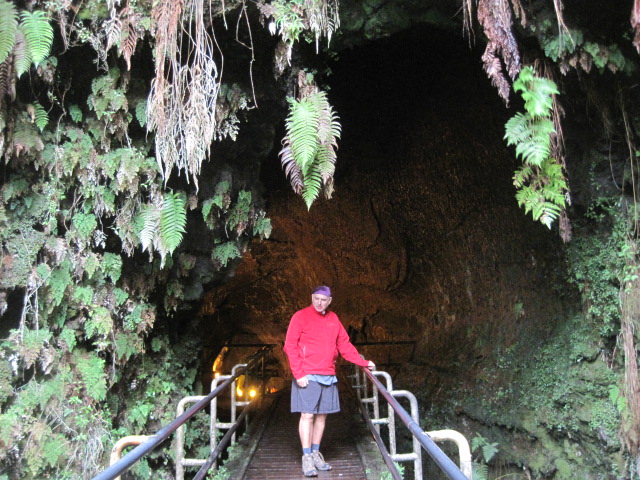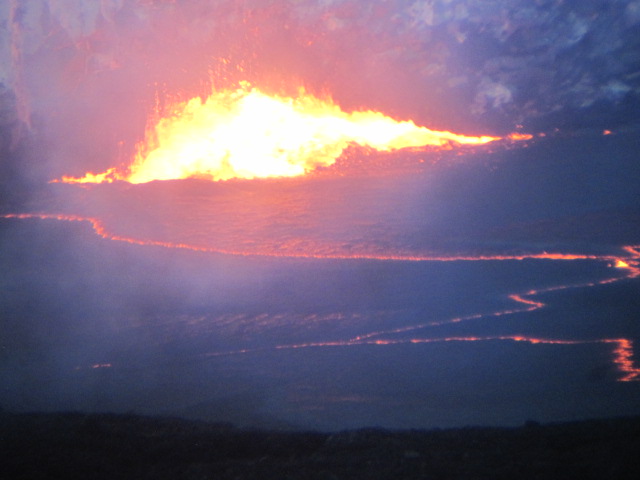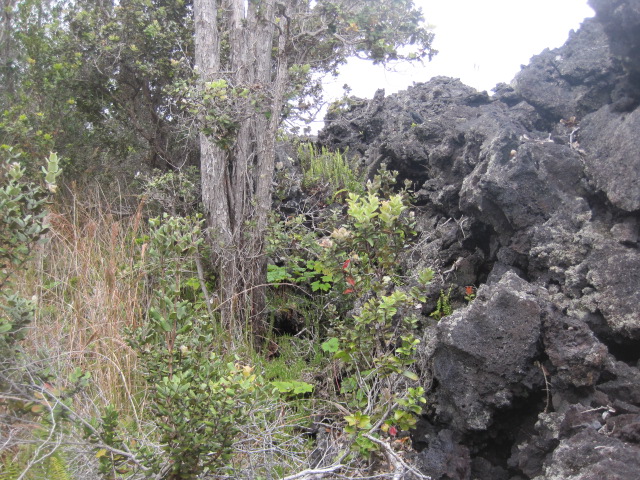Our next stop was the Black Sand Beach, Punalu'u. This was exactly as advertised, a beach made entirely of black sand. It is also well known because the Green Hawaiian Sea Turtle and there were three on the beach sunning themselves. It was very hot, the black sand making it more so.
Friday, 8 May 2015
A Rainbow of Beaches...Turtles and Manta Rays cont'd
A rainbow of beaches...turtles and manta rays
We spent the day after our return from the volcano taking care of our camping equipment and running a few errands in the local town. It was a quiet day and we ended it with a trip to the local white sand beach to watch the sunset. The waves were pounding in to the beach and the surfers and boogie board riders were out in force. Paul decided to go into the water and he got well and truly tossed by waves which were higher than his head!
Thursday, 7 May 2015
North Side of The Big Island
We left the Volcano National Park and made our way north to explore a side of the Island which we had not seen since our honeymoon thirty five years ago.
We started our exlorations at Ahalanui Thermal Spring Park. This is a park in a fairly remote area, accessed on a narrow road leading through a mango forest. It passes a national state monument as well which is a "grove" of lava trees, much like the ones we had seen on our walk the day before.
The nearby thermal park is frequented by local residents and is a partially natural, partially man made enclosure around a pool of brackish water fed by a thermal spring and incoming ocean water The water is delightfully warm and is constantly fed by the incoling ocean tides. Itwas a lovely interlude as we had been showerless for three days!
After a thorouh soaking, we made our way to Hilo to see Rainbow falls. These are huge waterfalls which are usually arced with a rainbow. Unfortunately we were not blessed with good weather and so we observed the falls under overcast skies. It was impressive nevertheless.
We continued our tour and were amazed that this side of the island is so lush and green-such a contrast from the other side which is an arid desert. We passed many lush valleys and rain forests along our way. We made a stop at the Waipio Valley where the craggy coast was in view.
An Evening and Night at the Caldera
After our hike we took a drive in another area of the park. We made our way through a unique forest area where we saw many wild birds and a wild feral pig as well. The road ended at a different cliff top where we could see the coast again. We also stopped at a huge lava tube which runs through the mountain. We were able to walk through this tube which was high above our heads and we couldn't imagine it being full of boiling lava.
After dark we returned back to the Caldera where a different part of the lava lake was in full eruption. The skies cleared off temporarily and the moon shine was bright and brought a different feeling to the area. We watched as native Hawaiians performed rituals to Pele, the godess of the volcano. This also added a different dimmension to the experience. We watched the eruption until we were too tired to continue and we turned in for one more night in our faithful tent. At 4:00 am we were awakened by loud bangs and we knew that something was changing at the volcano. We made the trip to the caldera and th eruption was far more active in yet another place and the bangs and crashes kept happening. At one point the reuption started to roar and hiss and we were amazed that we could hear it as we were at least a mile away from it. We stayed and watched the sun come up and then bid the volcano good bye after a quick visit to an old caldera we had visited when we were here 35 years ago. The volcanic gases from the eruption could be seen from this point and the sky glowed red.
Lava Curtain
We also went to see the results of a curtain of lava. In 1969 a crack opened in the earth and spewed out in curtains, creating a huge rock wall. It was awe inspiring to see the rock formations which had been formed and to look into the deep cravasse from where the eruption originated.
Pu'u Hulhulu hike on the lava
We took tge advice of a park ranger and decided to go for a hike to a cinder cone which was created during an eruption some 40 years ago. We figured that if we got a photo of ourselves iwith it we could claim to be "older than the hill".
When we arrived we discovered a very interesting trail which led to the origin of a lava flow from 1969. This was one of the flows we had seen from below on the Chain of Craters Raod and now we could see the lava up close. The landscape was very barren with some plant life struggling to get established on the very rock itself. We also came across lava trees. These are rocky outcrops which protrude from the ground and which were once trees. When the lava built up around these trees, the lava formed around the brunks and branches and remained standing. The wood burnt away and the mold of the trees is what now remains. We also saw the terminus of the flows where the forest continues to grow near the edge of the rocky walls. From the path we could see the summit caldera smoking in the distance, reminding us of the way the flows started.



















































